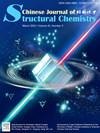Investigation of water structure and proton transfer within confined graphene by ab initio molecule dynamics and multiscale data analysis
IF 5.9
4区 化学
Q1 CHEMISTRY, INORGANIC & NUCLEAR
引用次数: 0
Abstract
The structure of water and proton transfer under nanoscale confinement has garnered significant attention due to its crucial role in elucidating various phenomena across multiple scientific disciplines. However, there remains a lack of consensus on fundamental properties such as diffusion behavior and the nature of hydrogen bonding in confined environments. In this work, we investigated the influence of confinement on proton transfer in water confined within graphene sheets at various spacings by ab initio molecule dynamic and multiscale analysis with time evolution of structural properties, graph theory and persistent homology. We found that reducing the graphene interlayer distance while maintaining water density close to that of bulk water leads to a decrease in proton transfer frequency. In contrast, reducing the interlayer distance without maintaining bulk-like water density results in an increase in proton transfer frequency. This difference is mainly due to the confinement conditions: when density is unchanged, the hydrogen bond network remains similar with significant layering, while compressive stress that increases density leads to a more planar hydrogen bond network, promoting faster proton transfer. Our findings elucidate the complex relationship between confinement and proton transfer dynamics, with implications for understanding proton transport in confined environments, relevant to energy storage and material design.

用从头算分子动力学和多尺度数据分析研究石墨烯中水结构和质子转移
纳米尺度约束下的水和质子转移结构由于其在解释多个学科的各种现象方面的重要作用而引起了人们的广泛关注。然而,在诸如扩散行为和氢键在密闭环境中的性质等基本性质上,仍然缺乏共识。在这项工作中,我们通过从头算分子动力学和多尺度分析,结合结构性质的时间演化,图论和持续同源性,研究了限制对不同间距的石墨烯片内水中质子转移的影响。我们发现,在减少石墨烯层间距离的同时,保持水的密度接近于水的密度,会导致质子转移频率的降低。相反,在不保持体积水密度的情况下减小层间距离会导致质子转移频率增加。这种差异主要是由约束条件造成的:当密度不变时,氢键网络保持相似,分层明显,而增加密度的压应力导致氢键网络更加平面,促进质子更快转移。我们的研究结果阐明了约束和质子转移动力学之间的复杂关系,对理解约束环境中的质子传输具有重要意义,与能量存储和材料设计有关。
本文章由计算机程序翻译,如有差异,请以英文原文为准。
求助全文
约1分钟内获得全文
求助全文
来源期刊

结构化学
化学-晶体学
CiteScore
4.70
自引率
22.70%
发文量
5334
审稿时长
13 days
期刊介绍:
Chinese Journal of Structural Chemistry “JIEGOU HUAXUE ”, an academic journal consisting of reviews, articles, communications and notes, provides a forum for the reporting and discussion of current novel research achievements in the fields of structural chemistry, crystallography, spectroscopy, quantum chemistry, pharmaceutical chemistry, biochemistry, material science, etc. Structural Chemistry has been indexed by SCI, CA, and some other prestigious publications.
 求助内容:
求助内容: 应助结果提醒方式:
应助结果提醒方式:


